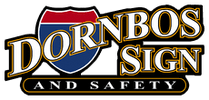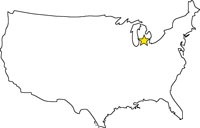Trailblazing - Not Always a Good Thing?
27th Jul 2017
We've all heard the term - as in, "that Steve Jobs was such a trailblazer," but for those of us who aren't avid hikers, the context is lost to us. Many of us think that little symbols we see painted or etched in seemingly random trees are just examples of graffiti. In fact, we are looking at the work of literal trailblazers.
To "trailblaze" is not to set a forest on fire or anything like that. Trailblazing is making marks - usually by paint or carving, but sometimes also by affixing markers, which are called "blazes", along paths to provide directional and distance information. Instead of a trail of breadcrumbs, a prior hiker may leave you a series of symbols.
Different places have different marking conventions, but many systems have similar symbols. By far the most popular is the Czech Hiking Markers System, which makes sense because the country boasts some of the nicest hiking trails in the world.
Blazes
Arrows are self-explanatory. You will also see three bars painted either on trees or boards, usually; two white bars with a colored bar sandwiched between them. Similar to ski hills, these markings and colors correspond to differing levels of difficulty. Red, unsurprisingly, indicates the most difficult trail (or a summit trail). Blue indicates that the trail is difficult but doable; yellow and green tell you that the trail is easy or interconnected with other trails.
On many trails in the US, the blazes consist solely of the colored bar.
Carved blazes also exist, but as a hiker, you'd have to be careful to differentiate carved blazes from animal claw marks. That bear is likely not trying to lead you to safety... If you're hiking on a trail and see what looks like a carved blaze on one side of the trail, you might want to backtrack and take another trail. If it's not an animal marking, it's a one-way trail - usually used by experienced hunters, not for people new to hiking.
Sometimes, you will see a single bar blaze - most often, a vertical bar. This is simply to say, "Yup, you're still on the trail - good work, buddy". These marks are known as "reassurance markers".
See also, Czech Hiking Markers System, Wikipedia.
Cairns
Where there is poor visibility or the absence of trees, you may find little stone stacks or pyramids, called cairns (or rock ducks). If there is an extra stone to the left, it is an indication that you will be turning left; right, right.
To Blaze or Not to Blaze
Especially on trails that see a lot of hikers all the time, there is always the possibility of confusion arising from "overblazing". If everyone blazes, you have a lot of trees that are all marked up. This is also an environmental concern for many who want to keep trails and forests as pristine as possible, with minimal signs of human activity.
SectionHiker.com offers these guidelines for trailblazing :
- Make blazes in one direction as you are hiking a trail. When you get to the end and turn around, you can blaze the opposite way.
- Blazes should be eye level and on living trees right by the trail - trees with dark bark, even better. Don't put a blaze on both sides of a tree, because if it falls, you've lost two markers.
- Try to make sure there is nothing blocking view of the blaze.
- Do NOT add to or commit overblazing. Blazes are best with at least 50 yards between them. Do not put a second blaze close to the first blaze - there should only be one visible at any time. If you see blazes for half the hike or more, the trail has already been overblazed.
Why Not Signs?
Using signs to mark trails remains controversial, as hikers sometimes complain that seeing signs at intervals takes away from the natural experience. For areas with many new hikers, however, signs may be a good idea, since they are harder to displace (e.g. knocking over a rock duck), and do not require knowing esoteric symbols.
We have an excellent array of park, camp, and trail signs that are sure to guide hikers and nature lovers, and do not involve making marks on trees. Let us know what you're looking for.




